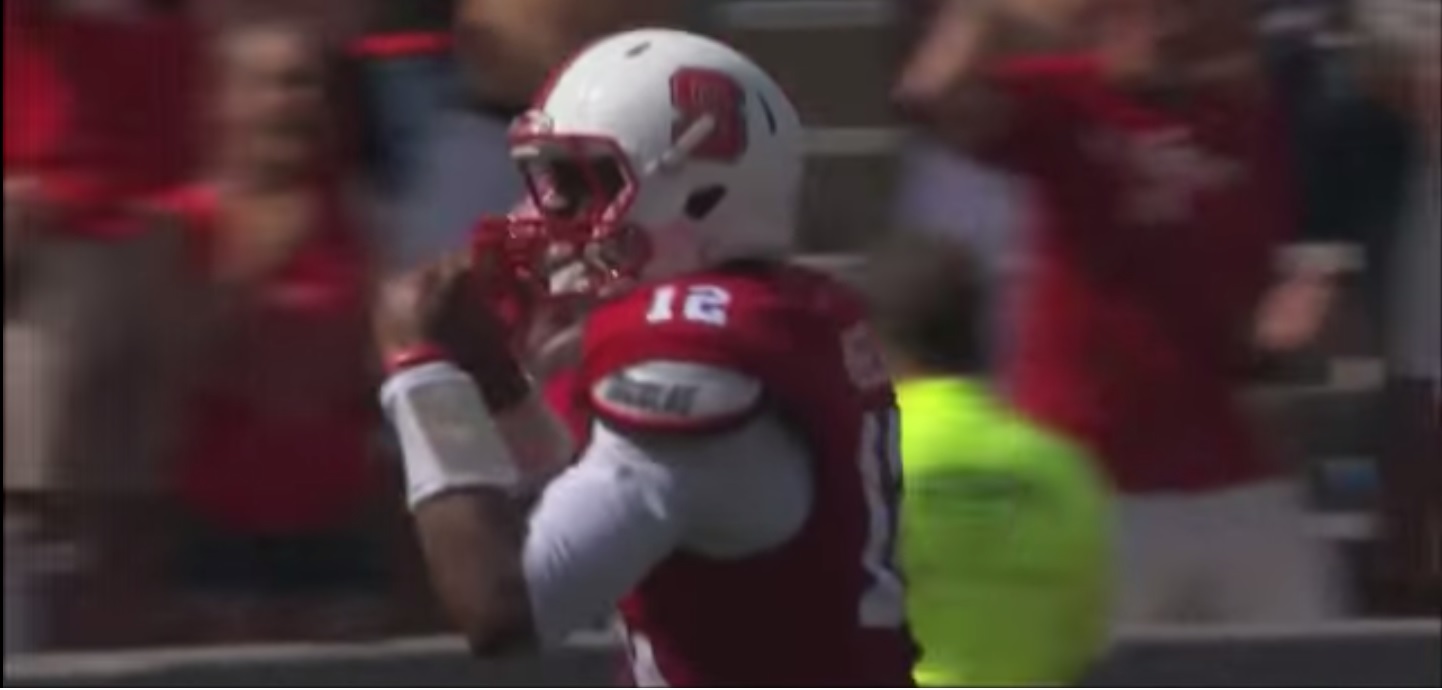
Every Play Tells a Story is a new video series by Eric Stoner, where he unpacks interesting and ambiguous plays. Stoner thinks of it as an offspring of the RSP Film Room and a sibling to the new and improved Boiler Room Video Series (Matt’s note: We didn’t know the other was working on short videos until yesterday, someone spiked the blog’s water cooler).
“There’s a danger in relying too heavily on logic. The danger is in the determination of the starting point. Once a starting point is chosen, there are a limited number of logical conclusions to a problem.”
–Me
I’ve said before that the draft is hard because it forces us to use both linear and non-linear thinking styles.
Linear thinking is important because it’s efficient, process-driven, and based around deductive reasoning. As the quote above says, linear thinking can also be limiting because it can only follow the path laid out by the starting point. In terms of the draft, I think it’s particularly helpful in identifying physical traits, as those things are observable, measurable, testable, and verifiable (and this goes for both the film and metrics sides of the spectrum).
Non-linear thinking is important because understanding physical traits is only part of the player evaluation puzzle. The other side of the coin is trying to understand the context of a player’s decision-making on the field. And trying to understand someone’s thought-process is tough. It’s even tougher when we think linearly and anchor ourselves to the starting point of our conclusion. That sounds paradoxical, but it’s often how this works: “This play is good/bad or shows this trait (starting point) because of X, Y, Z (observable information).”
The first installment of Every Play Tells a Story is a perfect example of why we need to use non-linear thinking when trying to figure out a player’s decision making. We’re going to remove all starting points. I’m ambiguous to the actual result. It’s not an example of something good, or something bad, or an example of a trait.
It’s peeling all the layers of information that the quarterback would have to account for and process through: what the play is trying to accomplish conceptually, and how both offense and defense dictate to each other. The difference is that I’ve got fifteen minutes to explain it. He’s got about fifteen seconds from the break of the huddle to the release of his throw.
Welcome to Every Play Tells a Story, starring Jacoby Brissett in his first drive of live action in two years.
Subscribe to Every Play Tells a Story on Youtube (Search Eric Stoner). Original video via Charles McDonald of DraftBreakdown. You can follow Eric Stoner on Twitter: @BeauxJaxson.
For analysis of skill players in this year’s draft class, download the 2015 Rookie Scouting Portfolio – available now. Better yet, if you’re a fantasy owner the Post-Draft Add-on comes with the 2012 – 2015 RSPs at no additional charge. Best, yet, 10 percent of every sale is donated to Darkness to Light to combat sexual abuse. You can purchase past editions of the Rookie Scouting Portfolio for just $9.95 apiece.


6 responses to “Every Play Tells a Story: The Danger of Logic”
Great work. Hope you continue with this. I sometimes struggle with what “open” looks like.
Hey Eric – thanks for the reference. If you don’t mind, please site “Cecil McCumber” instead of “Me” as who you’re quoting in “There’s a danger in relying too heavily on logic….” as it was I who wrote that. I do appreciate the shout out, however!
Cecil “Chuck” McCumber
chuckslamp.com
[…] For more about Brissett, check out Eric Stoner’s Every Play Tells A Story. […]
[…] Jacoby Brissett: Every Play Tells A Story (Stoner) […]
[…] See the rest at MattWaldmanRSP.com […]
[…] Eric Stoner: Every Play Tells a Story: The Danger of Logic […]